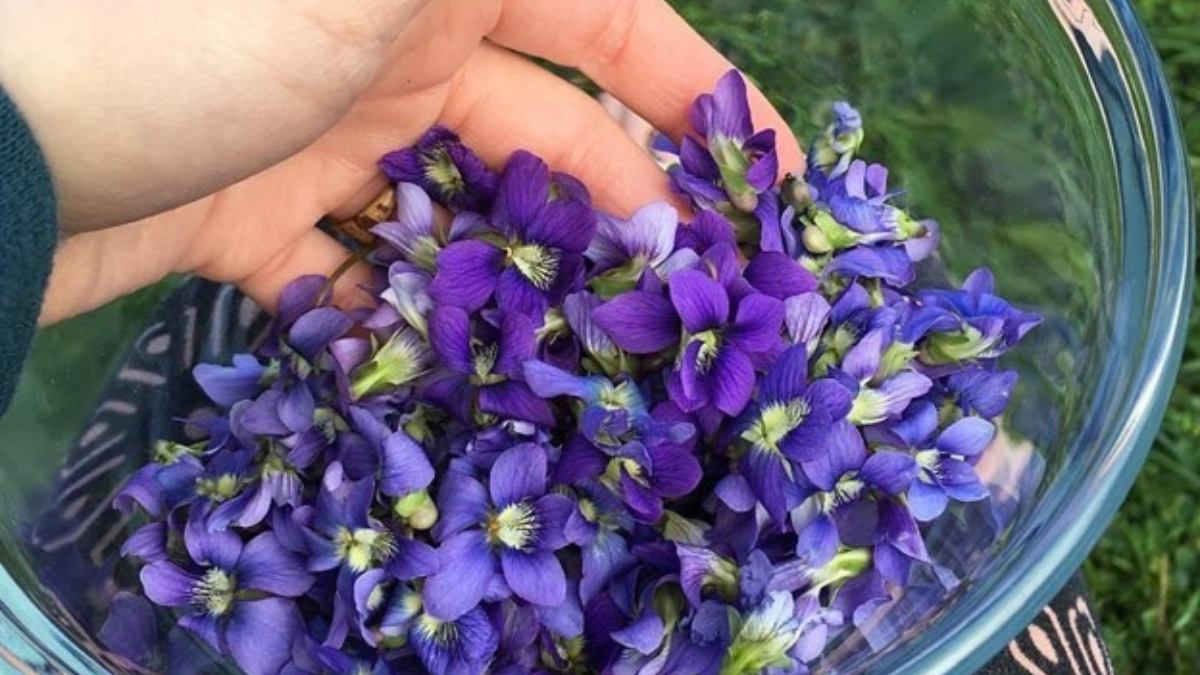Spring wildflowers are in bloom, and some of the most common species play an important role in herbal medicine. This week, we learn about some of the ways people use violets.
What’s your favorite style of egg roll? An acclaimed, out-of-the-way restaurant in Pounding Mill, Virginia bends culinary genres and uses an unexpected ingredient.
And, more and more school boards are pulling books from library shelves. We’ll speak with a reporter in a Virginia county where 57 titles were yanked.
In This Episode:
Violet Tendencies
Photo Credit: Brandon Tester
Every April, violets bloom across Appalachia, adding purple, white and yellow to the deepening green of the hills. But violets do a lot more than add natural flair. These flowers have long been a key ingredient in herbal remedies.
People use them to fight cancer and the common cold. And they make a pretty tasty snack.
Folkways Reporter Wendy Welch brings us the story.
Taking A Bite Out Of Cuz’s Uptown Barbeque
Photo Credit: Connie Bailey Kitts/West Virginia Public Broadcasting
In the South, people love to argue over which barbecue sauce is most authentic — vinegar, tomato or mustard. But Cuz’s Uptown Barbeque in Tazewell County, Virginia, is distinguished by something entirely different. For starters, its food is inspired by Asian cuisine and local mountain specialities.
You can find dishes on its menu like Morel mushrooms, cheesy egg rolls, and country ham caprese.
Back in 2022, Folkways Reporter Connie Bailey Kitts and her family stopped in at Cuz’s for supper.
A Book Ban In Rockingham, Virginia
Photo Credit: Ashlyn Campbell
Book bans are nothing new. But we’re seeing a new spike in book removals across Appalachia, including in North Carolina, Tennessee, Virginia and West Virginia.
Sometimes, debates that lead to book bans happen in state legislatures. But they’re just as likely to play out on the local level, in public schools.
In January, the school board in Rockingham County, Virginia voted to remove 57 books from school libraries, prompting an outcry.
Ashlyn Campbell has been covering the story for the Daily News-Record. Mason Adams spoke with Cambell to learn more.
——
Our theme music is by Matt Jackfert. Other music this week was provided by Sean Watkins, John Inghram, John Blissard, Amythyst Kiah, Dinosaur Burps, Doc Watson and Frank Hutchinson.
Bill Lynch is our producer. Zander Aloi is our associate producer. Our executive producer is Eric Douglas. Kelley Libby is our editor. Our audio mixer is Patrick Stephens. We had help this week from Folkways editors Nicole Musgrave and Mallory Noe-Payne.
You can send us an email: InsideAppalachia@wvpublic.org.
You can find us on Instagram, Threads and Twitter @InAppalachia. Or here on Facebook.
Sign-up for the Inside Appalachia Newsletter!
Inside Appalachia is a production of West Virginia Public Broadcasting.
